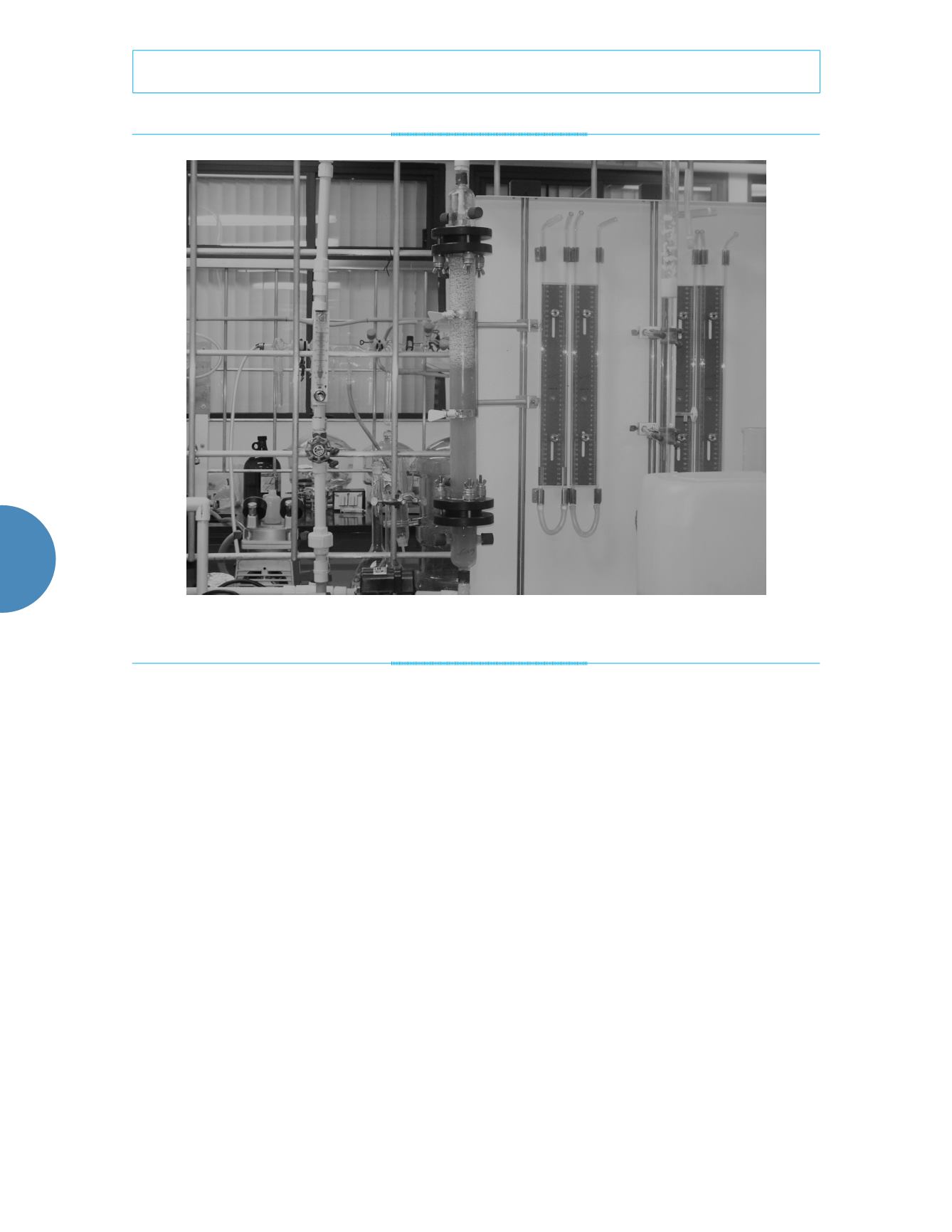
146
Tecnología y Ciencias del Agua
, vol. VIII, núm. 3, mayo-junio de 2017, pp. 143-150
Campos-Díaz & Alvarez-Cruz,
A proposal of a hydrodynamic model to low Reynolds numbers in a liquid-solid inverse fluidized bed reactor
•
ISSN 2007-2422
Results and discussion
Hydrodynamic study
The different equations that relate the bed po-
rosity with the fluid superficial rate can be clas-
sified into three main groups Fan
et al
. (1982).
The first group is based on a relationship that
dependence between velocity and initial veloc-
ity (U/U
i
) and porosity (
e
). The Richarson and
Zaki (1954) equation is the most popular of this
group. The second group of equations is based
on the drag for multi-particulates systems.
This is usually given as a function of Reynolds
number (Re) and Archimedes number (Ar).
Ramamurthy and Subbaraju (1973), and Riba
and Couderc (1977) are typical for this group.
The third group is based on the ratio ob-
tained from the balance of forces acting on a
particle isolated (gravity, floating, drag) and
Figure 2. Inverse fluidization reactor at different flowrates.
assume that applies to all particles in the bed as
the equation of Wen and Yu (1966) for spherical
and non-spherical particles using a shape factor
(
ψ
) and Reynolds numbers are in the range 200
to 6000. Table 1 shows the function of porosity
shown Wen and Yu (1966), Riba and Couderc
(1977), and Rammamurthy and Subaraju (1973)
which were chosen because they have a lower
standard deviation in the case of spherical par-
ticles of uniform size.
Predictive model proposed and comparison
with other models
The comparison of the results was made by plot-
ting the porosity function obtained from values
proposed by Wen and Yu (1966), Ramamurthy
and Subbaraju (1973), Riba and Courdec (1977)
and this work,
versus
experimental bed porosity
data.


